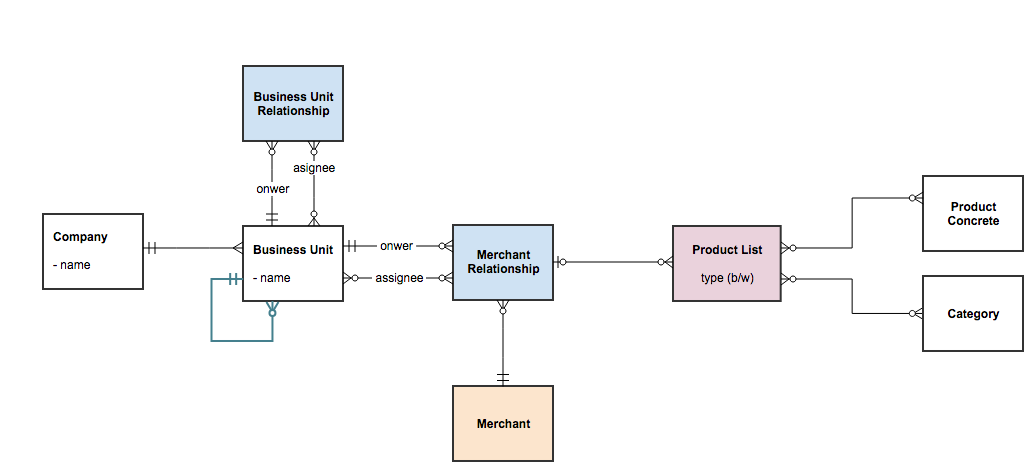Product Restrictions from Merchant to Buyer Overview 
At its core, Product Restrictions allow merchants to define the products that are available to each of their B2B customers.
In terms of Merchant concept, the merchant is the one who sells products on a marketplace and can set prices.
The diagram below shows product restrictions relations within the Merchant concept:

Product Restrictions from Merchant to Buyer give merchants another layer of control over the information, a customer can see in the shop application. Based on product restrictions, you can:
- create a list of products;
- hide the product information for the products (pricing, appearance in the search/filters), and limit access to a product details page.
Product Restriction feature works on the basis of whitelist/blacklist lists. That means that products that are added to whitelist are always shown to a customer while blacklisted products are hidden from the customer view.
To restrict the products, a Shop Administrator needs to create a product list, include the necessary products to the list and blacklist them for a specific merchant relationship. All other products will be available for that merchant relationship.
To create product lists, follow the guideline for the Administration Interface.
You can check more cases of product restrictions workflow on this page.
Current Constraints
- Currently, in the situation, when a single product from the product set is blacklisted, the other items are displayed in the shop. We are going to update the logic in a way, that in case any of the items in the product set gets blacklisted, all relevant product sets containing this item will get blacklisted too.
- The current functionality allows displaying the whole product bundle even if it contains the blacklisted customer-specific products. We are working on updating the logic so that if the bundle product includes a blacklisted item, the whole bundle is also blacklisted for a customer.
See also:
- Check out the use-cases of the behavior of the restricted products
- Enable the Product Restrictions from Merchant to Buyer v.201903 feature
- Create a new product list to set product restrictions
- Edit the existing product list
- Export a product list
- Remove a product list from the system
- (Un)Assign a product category to a product list
- (Un)Assign an individual product to a product list
- Remove products from the product list
Last review date: Jul 08, 2019